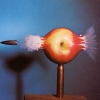Are Russians Serial Watch Abusers?
-
Recently Browsing
- No registered users viewing this page.
-
Topics
-
Posts
-
Hello, I'm after some help on getting a functional tool for removing and replacing case tubes, the friction fit type not the threaded type. I have previously owned two Chinese Ali Express tools, which worked, but in each case after using on a watch case with an angled case the watch the case had to be manually held perpendicular and when this angle was not perfectly aligned the pusher pin inevitably received a slight side load and the tool body was damaged. Due to the fact that the hole which holds the pusher pin is so close to the end of the block and the material wall is so thin: The result was that the hard pusher pin stretched and deformed the hole and the pusher pin was then slack and no longer perpendicular, and eventually the material split altogether. After I looked at the tool I realised that the block the hole was machined into was aluminum, this coupled with the extremely thin wall made this hole very weak and prone to the deformation and damage I had experienced. I looked to another reputable supplier (see below) who advertised their tool as "all steel" and I even contacted their customer support who confirmed that the block in question was made of steel. I was very disappointed yesterday when it arrived and found that it was in fact aluminum and not steel as promised. I could tell by the feel of the material (weight) and confirmed with a magnet which would not 'stick' and have since requested a return/refund. Assuming the return/refund goes smoothly, I am still left with my original problem of not having a tube pusher tool - does anyone have any recommendation for a tool which will work and will also stand the test of time?
-
Drilling is going to be difficult, firstly because the drill bits are so thin and brittle, expect to break a few. The second issue is access to the 'hole', as the other lug will be in the way, meaning that you will have to drill at a slight angle, putting a bending stress on the drill bit and with the slightest drop in concentration .... and back to my first point. I would be tempted to grind them flat with a Dremel type tool or small jewelers file, and then put a center punch in the center of the bit to be drilled so the drill bit doesn't skip around and break... but expect this to be slow and frustrating work. By the time you have done 4 of these you'll be an expert and can come back and tell us all the best way to do it if you go down this route. However, I would seriously consider What @watchweasol said and drill from the outside-in, this will ensure straight holes without having to work around the other lugs. It may be worthwhile making yourself a simple paper template so you can be sure to match the position of each hole before drilling. In the end you will be left with 4 holes on the outside of the lugs, but many cases are made this way and unless you are looking for it you probably won't notice or realise that it's not the way the watch was meant to be in the first place.
-
What works for me (waiting for the villagers to assemble with torches and pitchforks) is to put a liberal (in watch terms) spot of 9010 on one of the pins of the pin pallet, this seems to improve amplitude and beat error.
-
Non-magnetic is a poor description of such a hairspring. A better description would be unmagnetisable hairspring. There are metals and alloys that are attracted to magnets, but don’t become magnetised themselves. A hairspring made out such a material will be attracted to magnetised tweezers, but will not become magnetised. These hairsprings can be disrupted by being in close proximity to a magnet, but the disruption will cease the moment the magnet is moved away. These are hairsprings that could conceivably be disrupted by a magnetised hairspring stud. Best Regards, Mark
-
By ManSkirtBrew · Posted
More than enough. Here's mine at the height I work at. I think the working distance with the included 0.5x Barlow lens is about 9". So yes, that halves the magnification. The full story is the objective lens goes from 0.7x to 4.5x. The eyepieces are 10x, giving you the advertised magnification of 7x-45x. However the working distance is unacceptably short, so it comes with an 0.5x Barlow lens, reducing the magnification range to 3.5x-22.5x, but giving you a good working distance. What I did was buy a pair of Extreme Widefield 20x Eyepieces for when I need more magnification. You keep your high working distance, but get your 45x magnification back, at the cost of some width of field.
-







Recommended Posts
Join the conversation
You can post now and register later. If you have an account, sign in now to post with your account.
Note: Your post will require moderator approval before it will be visible.